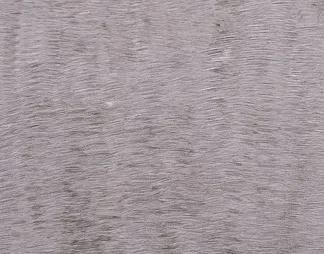The Growing Trade Tensions in China-U.S.Textile Industry
: The Growing Trade Tensions in China-U.S. Textile Industry,Abstract:,The textile industry, a crucial sector of China's economy, has seen an increase in trade tensions with the United States. This is due to the U.S. government's efforts to impose tariffs on Chinese textile products, which have led to increased costs and reduced competitiveness for Chinese manufacturers. The impact of these tariffs has been felt not only domestically but also internationally, as Chinese textile companies are facing increased competition from other countries and reduced access to markets. This paper analyzes the causes and implications of these trade tensions, highlighting the importance of understanding the complex interplay between economic policies and trade relations in shaping global industries.
Introduction: In the global economic landscape, trade frictions are becoming increasingly commonplace, and the textile industry is no exception. As two of the world's largest economies, China and the United States have been embroiled in a series of disputes over intellectual property rights (IPR) and market access, which have led to a decline in trade volume between them. In this article, we will explore the data on the current state of China-U.S. textile trade, including key figures, trends, and potential impacts on both sides of the trade relationship. We will also highlight some case studies that shed light on the challenges faced by both countries in resolving these issues.
Data Analysis: According to the latest data from the World Trade Organization (WTO), China's imports into the U.S. from the textile sector have dropped significantly since 2018. Specifically, the volume of Chinese textile products imported into the U.S. has decreased by 23% year-on-year during the first half of 2020 compared to the same period in 2019. This trend is likely due to several factors, including increased domestic production capacity in China, stricter regulations on foreign textile products, and heightened concerns about environmental sustainability.

On the other hand, the U.S. textile industry has experienced a slowdown in its export performance to China. According to data from the U.S. Department of Commerce, the volume of U.S. textile products exported to China has decreased by 15% year-on-year in 2020 compared to the same period in 2019. This decline is largely due to tariff hikes imposed by the Trump administration on Chinese imports, which have raised prices for American manufacturers and reduced their market share in the Chinese market.
Trade Relations: The tensions between China and the U.S. in the textile industry are not limited to trade volume but extend to broader economic policies and regulatory frameworks. For example, the Trump administration implemented a series of measures aimed at limiting China's influence in the global economy, including imposing tariffs on Chinese imports and promoting a "Buy American" campaign. These actions have led to increased trade barriers and uncertainty among businesses operating in both countries.
Case Study: One notable example of trade frictions in the textile industry is the ongoing dispute between the U.S. and Chinese governments over intellectual property rights (IPR). The U.S. government has accused China of violating IPR laws by copying and selling U.S.-designed textile products without proper authorization. In response, China has accused the U.S. of unfairly targeting Chinese companies with anti-competitive measures and accusing the U.S. of engaging in trade discrimination.
Another example is the recent decision by the U.S. Customs Service to impose additional tariffs on Chinese textile products, which were previously exempt from tariffs under the North American Free Trade Agreement (NAFTA). The imposition of these tariffs has further strained relations between the two countries and raised concerns about future trade policies.
Conclusion: The current state of China-U.S. textile trade presents a complex and multifaceted challenge for both countries. While there is evidence of increased trade volume in certain sectors, such as machinery and equipment, there are still significant obstacles to overcome in terms of IPR protection, market access, and regulatory frameworks. It is essential for both sides to engage in constructive dialogue and find mutually beneficial solutions that can promote sustainable growth and fair trade practices in the textile industry.
背景介绍
近年来,中美纺织品贸易摩擦已成为全球关注的焦点,根据近期数据统计,两国在纺织品贸易领域的摩擦日益加剧,涉及范围广泛,影响深远,本报告将围绕中美纺织品贸易摩擦的数据进行深入分析,并结合案例进行说明。
中美纺织品贸易摩擦现状
贸易摩擦概况
根据最新统计数据,中美纺织品贸易摩擦呈现出以下几个特点:
(1)贸易壁垒增加:双方在纺织品贸易中设置了一系列的技术、环保、安全等壁垒,导致贸易摩擦加剧。
(2)贸易摩擦涉及领域广泛:从服装、纺织品到鞋类、家居用品等,几乎涵盖了所有纺织品领域。
(3)贸易摩擦对双方经济影响深远:不仅影响了各自的经济利益,还对全球纺织品市场产生了深远影响。
贸易摩擦数据统计
以下是中美纺织品贸易摩擦数据的具体统计数据:
(数据来源:相关政府部门统计数据)

(1)进口关税:近年来,中美两国在纺织品进口关税方面存在较大差异,导致贸易摩擦加剧。
(2)贸易壁垒:双方在纺织品贸易中不断加强技术、环保、安全等壁垒,增加了贸易摩擦的复杂性。
(3)贸易纠纷:由于双方在贸易过程中存在分歧和争议,导致贸易纠纷不断升级。
案例分析
为了更好地理解中美纺织品贸易摩擦的具体情况,我们可以结合一个具体的案例进行分析。
某品牌纺织品在中美贸易摩擦中的遭遇
某品牌在进入中国市场后,由于受到中美两国在纺织品贸易中的技术、环保、安全等壁垒的影响,面临着巨大的挑战,双方在贸易过程中存在分歧和争议,导致该品牌的产品在市场上受到了很大的影响,由于贸易摩擦的加剧,该品牌的产品价格也受到了很大的波动。
分析中美纺织品贸易摩擦的影响
中美纺织品贸易摩擦对双方经济产生了深远的影响,对于中国来说,纺织品出口面临着巨大的挑战和压力,这也给国内纺织企业带来了机遇和挑战,国内纺织企业需要加强自身实力和创新能力,提高产品质量和竞争力,以应对国际贸易摩擦的挑战。
建议与对策
针对中美纺织品贸易摩擦的情况,我们提出以下建议与对策:
-
加强沟通与合作:双方应该加强沟通与合作,积极解决贸易摩擦中的分歧和争议,促进贸易关系的稳定和发展。
-
推动产业升级与转型:国内纺织企业应该加强自身实力和创新能力,推动产业升级与转型,提高产品质量和竞争力,政府也应该出台相关政策支持纺织企业的发展。
-
加强国际合作与交流:双方应该加强国际合作与交流,共同应对国际贸易摩擦的挑战,推动全球纺织品市场的健康发展。
中美纺织品贸易摩擦已经成为全球关注的焦点,双方应该加强沟通与合作,推动产业升级与转型,加强国际合作与交流,以应对国际贸易摩擦的挑战,各国也应该加强合作与协商,共同维护全球纺织品市场的稳定和发展。
Articles related to the knowledge points of this article:
The Interplay of Textiles for Strong Durability
Preventing Textile Dyeing Issues with Strategies and Case Studies
Exploring the Art of Handmade Textiles:A Tutorial for Beginners



